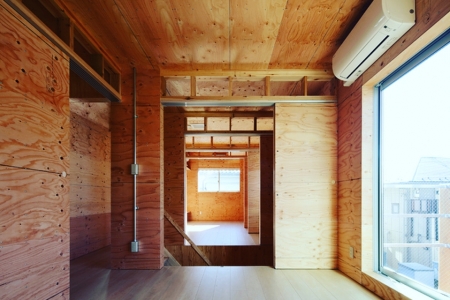不均質空間
予め何をするかが決まっていない空間を設計してみようと考えてみると、簡単そうで案外難しい。
ユニバーサル・スペースのような空間の設計をすることは一般的によくある。限定せずに自由に使えるスペースとして、建築家のミースの空間を例にあげて、均質空間と称して、オフィスビルをイメージしてもらうとわかりやすいが、どのようなテナントにも対応可能な空間を指すが、予め何をするかが決まっていない空間とは、限定せずに自由に使える均質空間を目指すのではなくて、居心地の良い場所を自分が発見するように見つけていく空間で、その場所の解釈は人によって違い、まるで自然の中のような、森のような、均質ではなく、不均質な空間で、その時々で空間の受け止め方が変わる、違う空間、だから、予め何をするかが決まっていないということになる。
要するに、たくさんの解釈が折り重なり、同時に存在し、その中から選択するように発見していく空間である。
"Inhomogeneous space"
If you try to design a space where you don't know what to do beforehand, it seems easy and unexpectedly difficult.
It is common to design a space such as a universal space. As a space that can be used freely without limitation, taking the example of the architect's Mies space as a homogeneous space, it is easy to understand if you imagine an office building, but a space that can accommodate any tenant Pointing out, a space where you do not decide what to do beforehand is a space where you find a comfortable place to find a comfortable place, rather than aiming for a homogeneous space that can be used freely without limitation. Interpretation of the place differs from person to person. It is a heterogeneous space that is not homogeneous, like a forest, like nature, and the way of accepting the space changes from time to time. That means that it has not been decided.
In short, it is a space where many interpretations overlap, exist at the same time, and discover to choose from among them.

